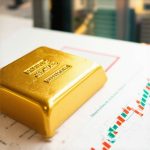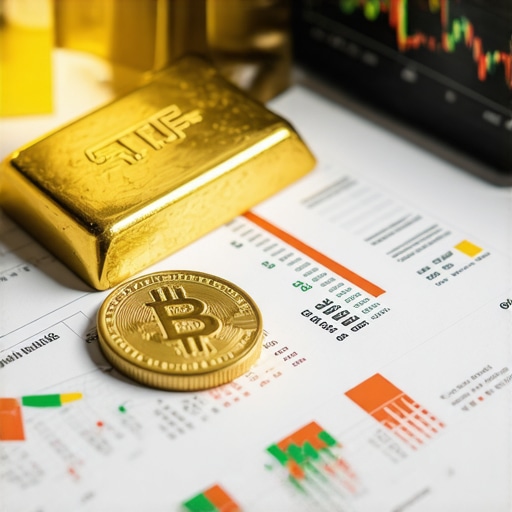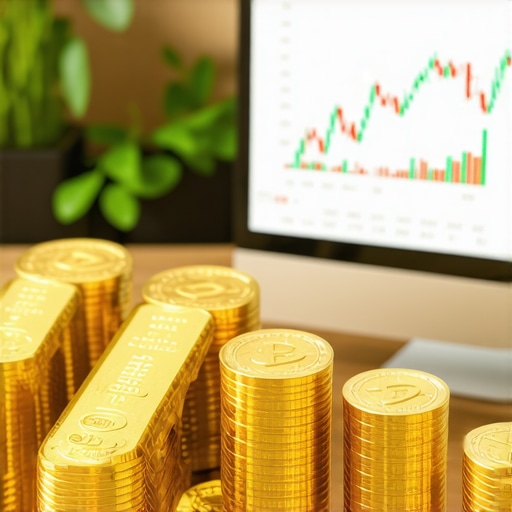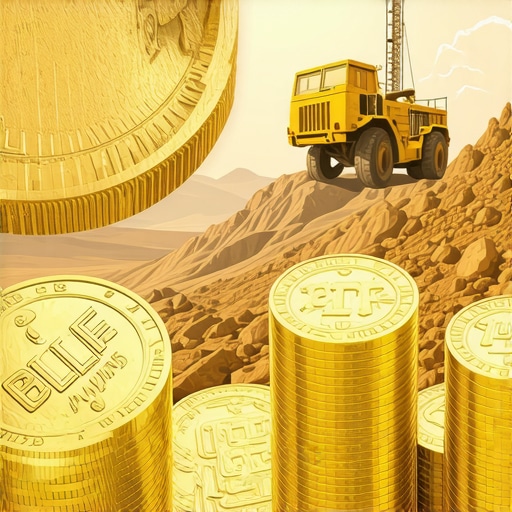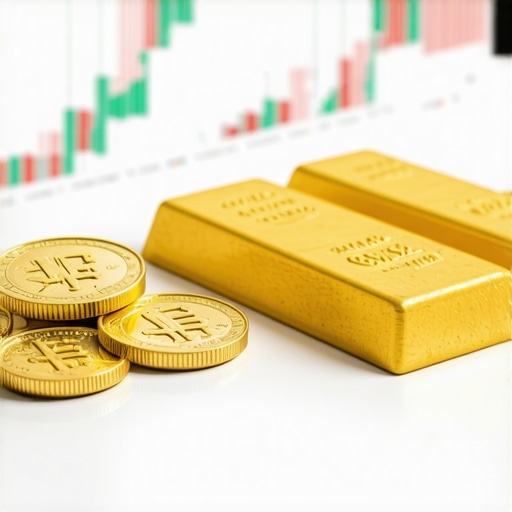The Strategic Dimensions of Gold Investment in 2025: Navigating Coins, Bars, and ETFs with Expert Insight
In the evolving landscape of global finance, gold remains a cornerstone of wealth preservation and strategic asset allocation. As we approach 2025, understanding the nuanced distinctions and future trajectories of various gold investment vehicles—namely coins, bars, and exchange-traded funds (ETFs)—becomes essential for discerning investors. This comprehensive analysis synthesizes current market dynamics, supply-demand cycles, and macroeconomic factors to equip investors with an advanced perspective on optimizing their gold portfolios for the years ahead.
Unpacking the Complexity of Physical Gold: Coins and Bars in a Modern Portfolio
What are the key considerations when integrating gold coins and bars into a resilient investment strategy?
Gold coins and bars serve as tangible assets that offer liquidity and security, but they demand a sophisticated approach to valuation, storage, and authenticity verification. The distinction lies in their form factors and premium structures—coins often carry numismatic value alongside intrinsic metal content, while bars are favored for their cost-efficiency and ease of storage. Experts advise diversifying within physical gold to hedge against geopolitical uncertainties and currency fluctuations, especially amid rising inflationary pressures forecasted for 2025. Furthermore, understanding the regional regulatory landscape can influence the liquidity and tax implications of physical gold holdings.
For a practical guide on secure acquisition, consider consulting resources like this safety guide, which details best practices for verifying dealer legitimacy and affixing premium valuation strategies.
Gold ETFs and Mutual Funds: Digital Alternatives for Portfolio Diversification
How can ETFs and mutual funds complement physical gold holdings in a diversified strategy?
Gold ETFs and mutual funds offer a compelling avenue for investors seeking exposure to gold without the logistical complexities of physical storage. These instruments provide liquidity, ease of diversification, and flexibility to adapt to market shifts. In 2025, market analysts highlight the importance of selecting funds that emphasize transparency and low expense ratios, especially as global economic uncertainties influence gold prices. ETFs such as the SPDR Gold Shares (GLD) or similar products track gold prices directly, while mutual funds may include gold mining stocks, providing leverage to the sector’s growth potential.
For further insights into fund selection, explore this detailed analysis.
Expert Debates: Will Central Bank Gold Purchases Drive Prices in 2025?
How might shifts in central bank strategies influence gold prices in the coming year?
Central banks globally have adopted a more active stance on gold reserves, viewing it as a safeguard against currency devaluation and geopolitical risks. As outlined in recent white papers, such as those from the World Gold Council, increased official sector purchases could underpin a bullish trend in gold prices in 2025. Investors should monitor central bank reports and international monetary policy shifts, as these institutional moves often precede significant market adjustments. The interplay between monetary policy and gold demand underscores the importance of integrating macroeconomic analysis into investment planning.
To assess future price drivers, consult this market forecast for expert predictions and trend analysis.
Conclusion: Synthesizing Multi-Asset Strategies for 2025
Expert investors recognize that a multi-pronged approach—balancing physical assets with financial instruments and macroeconomic insights—is crucial for optimizing gold investments in 2025. The dynamic interplay of supply-demand cycles, geopolitical developments, and monetary policies necessitates a nuanced understanding and agile strategy. As the global economy navigates uncertain waters, gold remains an enduring hedge, provided that investors leverage expert knowledge and advanced analytical tools to guide their decisions.
Engage with our community of financial experts or explore additional content on developing long-term gold strategies here.
Leveraging Market Cycles: The Key to Unlocking Gold’s Future Potential in 2025
Understanding the intricate supply-demand cycles of gold is fundamental for investors aiming to optimize returns in 2025. These cycles are influenced by macroeconomic factors such as inflation rates, monetary policy shifts, and geopolitical tensions. Recognizing patterns within these cycles enables investors to anticipate price movements and position their portfolios accordingly. For example, periods of increased jewelry demand, especially in emerging markets, often coincide with supply constraints, pushing prices upward. Conversely, technological advancements in gold mining can temporarily boost supply, exerting downward pressure. Experts emphasize the importance of integrating these dynamic cycles into a comprehensive investment framework, ensuring that one’s strategy remains adaptive amidst evolving market conditions. For an in-depth analysis, see this resource.
Could macroeconomic shocks or policy shifts disrupt anticipated supply-demand patterns in 2025?
Such disruptions are plausible, given the unpredictable nature of global events and policy decisions. For instance, unexpected inflationary surges or a sudden shift in central bank reserves could significantly alter gold’s trajectory. Therefore, investors should adopt a proactive stance by continuously monitoring economic indicators and geopolitical developments. Incorporating hedging strategies like options or futures can also provide protection against sudden market volatility. Staying informed through authoritative sources such as the latest market forecasts can help in making timely adjustments to investment positions.
Innovative Tools for Gold Investment: From Quantitative Models to AI-Driven Analysis
Emerging technologies are transforming how investors analyze gold markets. Quantitative models, utilizing big data and machine learning, can forecast price movements with higher precision by identifying subtle patterns and integrating multiple variables. AI-driven analysis tools synthesize macroeconomic data, sentiment analysis, and supply-demand metrics to generate actionable insights. These innovations enable a more nuanced understanding of market drivers and facilitate strategic timing for entry and exit points. For example, predictive analytics can highlight optimal moments for increasing physical gold holdings or adjusting ETF allocations. To explore cutting-edge tools, consider resources like this expert guide.
How can integrating advanced data analytics elevate your gold investment strategy in 2025?
By harnessing sophisticated data analytics, investors gain a competitive edge through more precise forecasts and risk management. This approach allows for the early identification of emerging trends, minimizing downside risks while maximizing upside potential. Combining these insights with a diversified asset mix—such as stocks in gold mining companies, physical assets, and ETFs—can create a resilient portfolio capable of weathering market fluctuations. For practical implementation, investors should explore tools and platforms that offer real-time data integration and predictive modeling, ensuring their strategies are both data-driven and adaptable.
Share your thoughts or experiences with innovative investment tools in the comments section and discover more about effective diversification techniques at this comprehensive resource.
Harnessing the Power of Derivatives: Advanced Hedging Techniques for Gold Investors in 2025
As the gold market continues to evolve amidst geopolitical tensions and macroeconomic fluctuations, sophisticated investors are increasingly turning to derivatives—options, futures, and swaps—to manage risk and leverage opportunities. These financial instruments, when employed judiciously, can serve as potent tools for hedging against adverse price movements or for speculative purposes, enabling a nuanced approach to portfolio management.
For instance, gold futures contracts allow investors to lock in purchase or sale prices for future delivery, effectively shielding against short-term volatility. Options, on the other hand, provide strategic flexibility; purchasing put options grants downside protection, while call options can capitalize on bullish trends without the need for outright ownership. Expert traders often combine these instruments in complex strategies such as spreads and collars to optimize risk-return profiles.
However, navigating derivatives requires a profound understanding of market mechanics, margin requirements, and timing. According to a comprehensive analysis by the MarketWatch Expert Report, mastery over these tools can significantly enhance portfolio resilience, especially in turbulent markets. Before integrating derivatives into your strategy, ensure robust risk management protocols and consider consulting with financial advisors experienced in commodities derivatives.
Integrating ESG Factors into Gold Investment: A Sustainable Approach for 2025
How can Environmental, Social, and Governance (ESG) criteria redefine gold investment in the coming year?
With increasing emphasis on sustainable investing, ESG considerations are reshaping the gold market landscape. Investors now scrutinize the environmental impact of mining operations, social responsibility practices, and governance standards of mining companies and refiners. Incorporating ESG factors not only aligns investments with personal or institutional values but can also influence long-term risk and return profiles.
Leading refiners like Johnson Matthey and Heraeus are pioneering responsible sourcing initiatives, certifying that their gold complies with rigorous ESG standards. Market data suggests that ESG-compliant gold products often command premium prices and enjoy greater demand among institutional investors seeking ethical portfolios. As such, integrating ESG analysis into due diligence processes—via third-party certifications or direct engagement with mining firms—becomes essential for modern gold investors.
For a detailed methodology on ESG integration, see this authoritative guide. Embracing ESG not only enhances reputational standing but also positions portfolios favorably within the evolving landscape of responsible finance.
Quantum Computing and AI: The Next Frontier in Gold Market Predictions
Emerging technologies such as quantum computing and artificial intelligence are poised to revolutionize how investors interpret gold market signals. Quantum algorithms can process vast datasets—encompassing macroeconomic indicators, geopolitical events, and market sentiment—with unprecedented speed and accuracy. Meanwhile, AI-driven models employ machine learning to identify subtle patterns and predict price trajectories that traditional models might overlook.
Institutions like Goldman Sachs and hedge funds are investing heavily in these innovations, aiming to refine predictive accuracy and develop algorithmic trading strategies that capitalize on short-term fluctuations. For individual investors, leveraging AI-based analytics platforms can offer a competitive edge—providing real-time insights, risk assessments, and automated alerts for optimal entry and exit points.
To explore these cutting-edge tools, visit this resource. Integrating advanced data analytics into your investment framework could be the differentiator needed to succeed in the increasingly complex gold market landscape of 2025.
Conclusion: Embracing Innovation and Strategic Foresight for Gold Investment in 2025
As the gold investment paradigm shifts toward more sophisticated and technologically driven strategies, staying informed and adaptable becomes paramount. From mastering derivatives and ESG integration to harnessing the power of AI and quantum computing, investors who embrace these innovations will be better equipped to navigate uncertainties and capitalize on emerging opportunities. The future of gold investment in 2025 hinges on strategic foresight, technological adoption, and a commitment to comprehensive risk management—hallmarks of true expertise in this dynamic market.
Engage with our community of industry experts or explore further insights on integrating these advanced strategies into your portfolio by visiting this in-depth resource.
Harnessing Blockchain for Transparency and Traceability in Gold Transactions
As the gold market continues to evolve, integrating blockchain technology offers unprecedented levels of transparency, security, and provenance verification. Decentralized ledgers can authenticate the origin of physical gold, ensuring ethical sourcing and reducing risks associated with counterfeit or conflict gold. Experts advocate for investors to seek platforms and dealers who leverage blockchain to certify their assets, thereby enhancing trust and liquidity. Moreover, blockchain-based tokenization enables fractional ownership, broadening access and liquidity for retail investors. Embracing this digital transformation positions investors at the forefront of a more transparent and efficient gold marketplace.
Can Biometric Security Enhance Safe Storage of Physical Gold Assets?
Security remains paramount in physical gold holdings, especially in an era of sophisticated cyber threats and physical thefts. Advanced biometric security systems—such as fingerprint, facial recognition, and retina scans—are increasingly integrated into vault access controls, offering heightened protection. These biometric solutions not only prevent unauthorized access but also facilitate seamless, real-time monitoring of storage facilities. Institutions and high-net-worth individuals should consider investing in smart vaults equipped with biometric authentication, ensuring their assets are safeguarded with state-of-the-art security protocols. This integration of biometric technology exemplifies the convergence of security science and asset management, elevating physical gold safeguarding to new standards.
What Are the Impacts of Quantum-Resistant Cryptography on Gold-Backed Digital Assets?
With the advent of quantum computing, traditional cryptographic security measures may become vulnerable, posing risks to digital gold assets and blockchain-based tokens. Quantum-resistant cryptography employs advanced algorithms designed to withstand quantum attacks, ensuring the integrity and security of digital representations of gold. Leading cybersecurity firms and blockchain developers are actively researching and implementing quantum-resistant protocols, which will be crucial in safeguarding investor holdings in the coming years. Investors should stay informed about developments in this domain and prefer platforms that adopt quantum-resistant measures, thereby future-proofing their digital gold investments against emerging technological threats.
How Does Artificial Intelligence Optimize Gold Mining and Supply Chain Efficiency?
AI-driven analytics are revolutionizing gold mining operations by enhancing exploration accuracy, reducing environmental impact, and streamlining supply chains. Machine learning algorithms analyze geological data to identify high-potential deposits more efficiently, minimizing unnecessary environmental disruption. Additionally, AI optimizes logistics, inventory management, and quality control throughout the supply chain, reducing costs and ensuring the integrity of gold products from extraction to refinery. As supply chain transparency becomes a regulatory and consumer priority, integrating AI technology offers a strategic advantage for miners and refiners seeking to meet ESG standards while maintaining profitability. This technological synergy ultimately stabilizes supply, influences pricing, and fosters sustainable growth within the gold sector.
Will the Adoption of Green Mining Technologies Reshape the Gold Market Landscape?
Environmental concerns and regulatory pressures are accelerating the transition toward eco-friendly mining practices. Innovations such as hydrometallurgical extraction, renewable energy-powered operations, and waste reduction techniques are gaining traction among industry leaders. These green technologies not only reduce carbon footprints but also improve social license to operate, attracting ESG-conscious investors. As transparency around environmental impact increases, companies pioneering sustainable mining will command premium valuations and market trust. Investors should consider the ESG profiles of mining firms and favor those committed to green innovations, aligning financial returns with responsible environmental stewardship.
How Can Investors Utilize Sentiment Analysis to Gauge Gold Market Trends?
Sentiment analysis harnesses natural language processing and AI to interpret market sentiment from news, social media, and analyst reports. This real-time insight enables investors to anticipate market movements driven by investor psychology, geopolitical developments, and macroeconomic news. Advanced sentiment platforms aggregate data and quantify market mood, providing early signals of potential price shifts. Integrating sentiment analysis into a comprehensive strategy enhances decision-making agility and risk management. Investors seeking an edge should explore reputable sentiment analysis tools, adapting their portfolios proactively based on emerging market narratives and collective investor behavior.
Engage with our expert community to explore these innovative strategies and secure your position in the future of gold investing. For personalized guidance, consult with industry specialists and access tailored insights at this resource.
Expert Insights & Advanced Considerations
Emerging Technologies Will Reshape Market Dynamics
Investors should stay ahead by integrating quantum computing and AI-driven analytics, which offer unprecedented precision in market predictions and supply chain optimization, fostering more resilient portfolios.
ESG Factors Are Becoming Core to Investment Decisions
Incorporating environmental, social, and governance standards into gold sourcing and mining operations not only aligns with ethical investing but also enhances long-term value and investor confidence.
Central Bank Policies Will Continue to Influence Prices
Monitoring official sector gold purchases and monetary policy shifts is crucial, as these actions often precede significant price movements, especially in a climate of geopolitical uncertainty.
Technological Innovations in Security and Transparency Are Critical
Blockchain certification and biometric vault security are revolutionizing asset safety and provenance verification, making physical gold holdings more secure and trustworthy.
Market Cycles and Macro Shocks Must Be Anticipated
Advanced analysis of supply-demand patterns and macroeconomic shocks, including inflation surges and policy pivots, can provide strategic advantages in timing allocations and hedging strategies.
Curated Expert Resources
- World Gold Council: Offers comprehensive reports on global gold demand, supply, and policy trends, essential for strategic planning.
- Bloomberg Terminal: Provides real-time data, analytics, and news on macroeconomic developments affecting gold markets.
- Responsible Gold.org: Guides sustainable sourcing practices and ESG integration in gold investments.
- Quantitative Finance Journals: Publish cutting-edge research on AI, quantum computing, and predictive analytics relevant to market forecasting.
- Industry Conferences & Forums: Platforms like the LBMA Conference facilitate knowledge exchange among top-tier investors and technologists.
Final Expert Perspective
Mastering the complexities of gold investment in 2025 requires integrating technological innovation, ESG principles, macroeconomic awareness, and advanced analytics. These elements collectively define a sophisticated, future-ready approach that empowers investors to navigate volatility and capitalize on emerging opportunities. For those committed to excellence in wealth preservation and growth, engaging with authoritative resources and continuously refining strategic frameworks is paramount. Your journey toward expert-level gold investing begins with informed action and strategic foresight—embrace these insights and leverage the wealth of available knowledge to stay ahead in the evolving landscape of precious metals.
